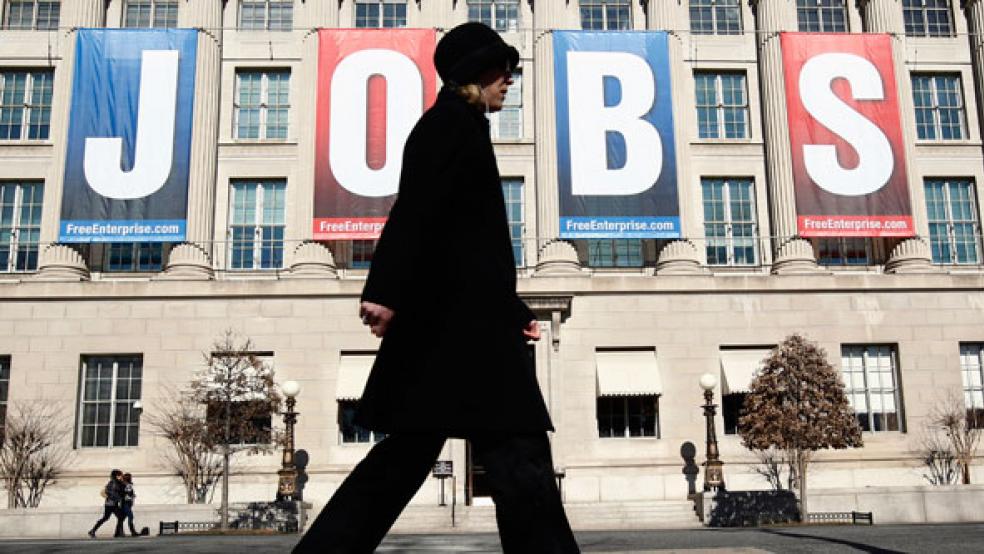The monthly extravaganza of breathless speculation about the Bureau of Labor Statistics jobs report should be going full steam by the time this story is published on Friday morning. Consensus is that the number (which will be revised next month, and then revised again after that) is expected to be somewhere in the neighborhood of 200,000. Of course, it has a margin of error so large that, frankly, it should be regarded as a ballpark estimate at best.
The BLS number, though, carries a lot of political weight.
Speaking at Northwestern University yesterday, President Obama essentially bet on a good BLS report, saying, “Here are the facts: when I took office, businesses were laying off 800,000 Americans a month. Today, our businesses are hiring 200,000 Americans a month. The unemployment rate has come down from a high of 10 percent in 2009, to 6.1 percent today. Over the past four and a half years, our businesses have created 10 million new jobs – the longest uninterrupted stretch of private sector job creation in our history.”
Related: Why Obama’s on Risky Ground Touting the Economy
It sounds like a good story. At this rate, the economy adds something like 2.5 million jobs per year, and the millions of unemployed Americans who are still looking for work – as well as the many who aren’t but could be lured back into the workforce by a strengthening economy – start to contribute to GDP again.
What many people fail to recognize is that while it’s good news to add a couple of hundred thousand jobs per month, it does much less to either the unemployment rate or the labor force participation rate than one might expect.
That’s because, according to economists like Barry Bosworth, a senior fellow in the Economic Studies Department at the Brookings Institution, the United States needs to add somewhere between 80,000 and 100,000 jobs per month just to keep up with population growth.
Related: Jobless Receiving Unemployment Insurance at a Record Low
If you think about the employment rate as a fraction, with the total number of jobs in the economy as the numerator and the number of people in the workforce as the denominator, you’ll understand that under ideal circumstances, every month both of them grow. So adding 200,000 to the top, while a good thing, is offset to a greater or lesser degree by adding as much as half of that to the bottom as well.
True, the unemployment rate had dropped to just over 6 percent from a high of 10 percent in 2009, but much of that improvement is illusory – it’s been people who could be working removing themselves from the denominator.
“Unemployment has gone down, basically, because people are leaving the labor force,” said Bosworth.
While job creation has been near 200,000 for most of the year, over the past four and a half years cited by the president, there have been a number of months where the rate of new job creation was not only below the rate of population growth, but was actually negative.
Related: New Evidence of How Unemployment Wrecks Families
That’s part of the reason why, despite the addition of 10 million jobs over the past four and a half years, the country still has nearly 10 million people still unemployed.
Part of the president’s job is to be the encourager-in-chief when it comes to economic growth, and nothing he said about jobs growth on Thursday was incorrect. But even he noted Thursday what many millions of Americans are still thinking: “Job growth could be so much faster.”
Top Reads from The Fiscal Times




